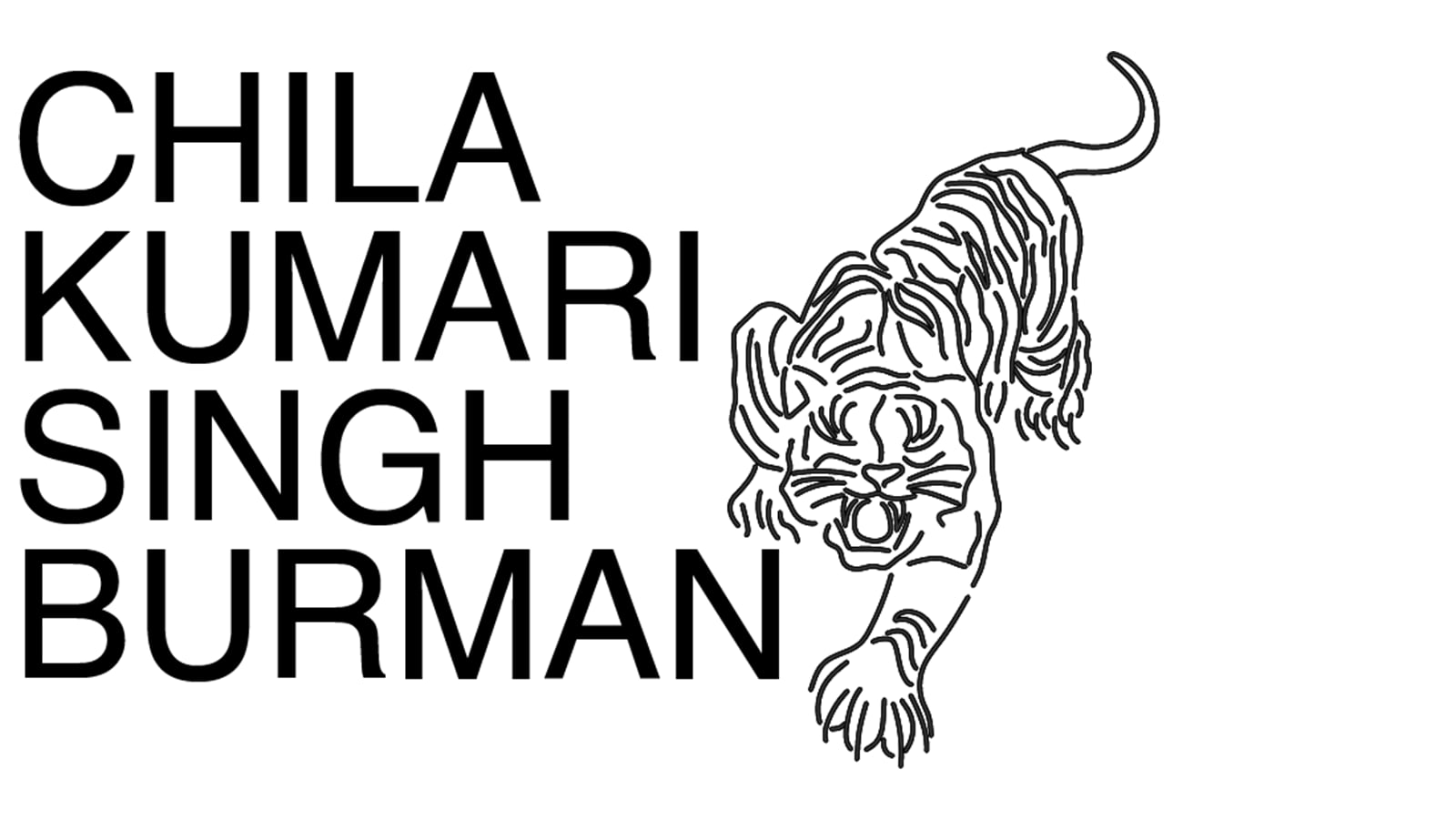Hiya,
I'm Chila, welcome to my website!
Since the mid-1980s I have been exploring the experiences and aesthetics of Asian femininity in paintings and installations, photography and printmaking, video and film. In my more recent works, this theme has taken on a new power and vibrancy.
Challenging stereotypical assumptions of Asian women, my work is informed by popular culture, Bollywood, fashion, found objects, the celebration of femininity; self-portraiture exploring the production of my own sexuality and dynamism; the relationship between popular culture and high art; gender and identity politics.
I hope you enjoy learning more about me and exploring over 40 years of my works!
Much pyar x

-
-
'Throughout her career the artist has drawn on a plethora of aesthetic strategies ranging from the use of found objects and Hannah Höch inspired collage to Arte Povera-style use of diverse materials with a post-punk DIY attitude.'
– Arjmand Aziz, SOAS University of London
As a graduate of print, the tactile nature of paper is important to me but regardless of the materiel, I find every surface, whether its concrete walls for mural painting, cast-iron balustrades, neo-classical columns or even our bodies, I can find a canvas for expression.
I collaborate with some of the leading craftspeople and specialists in the world, from Bermondsey-based OMNI print for digital graphics, to Set Works for large-scale neon installations, I always love to watch, learn and get stuck in myself on the technical application of my artworks into whatever format it requires.
My studio is a repository of ideas. I hoard everything, from magazines, leaflets, stickers, statues, ceramics, glassware, cones, mannequins, you name it, I'll keep it!
My portfolios from student days and all of my sketchbooks from across the years are often a place I'll return to, to reflect, to explore how my thinking has changed or how it hasn't. I love cutting and pasting words and imagery from old books, magazine issues, catalogues or prints. And somewhere in amongst all of it, I always like to keep a bottle of fizz to keep me going.
-
-
'Exquisite gorgeousness. I knew Chila Kumari Singh Burman when we were part of the black women's countercultural arts movement in the 80s... Her art has always been the most vital and exciting. Back then an outsider, today at Tate Britain.' – Bernardine Evaristo
Early in its inception, Chila joined an important non-for-profit project, Rich Mix in East London, a cultural space for the promotion of arts engagement within the local community and in particular for people of colour. Today, she continues to push the agenda for better representation of South Asian art in Britain through her role as one of their longest-standing Trustees.
Over the years, her work campaigning for under-represented people has taken her to many fascinating places, including Aleppo and Damascus, Lahore and Delhi, Johannesburg and many more.
-

-
'Her Auto-Portraits – black and white photos in which she dresses up and tries on different personas – prefigure the selfie culture and questions around representation that loom so large today. She’s achieved this in an environment that hasn’t been particularly open to female artists or those of colour.'
– Sir Nigel Carrington, UAL Vice-Chancellor, 2008-2021
Alongside visual arts, Chila has written extensively on feminism, race, art and activism.
In 1987, she wrote "There have always been Great Blackwomen Artists", exploring the situation of black women artists in relation to Linda Nochlin's 1971 essay "Why have there been no Great Women Artists?", first published in Women Artists Slide Library Journal no. 15 (February 1987) and then in Visibly Female; also reproduced in Collective Black Women Writers, Charting the Journey: An Anthology on Black and Third World Writers.
Her work appeared on the covers of Meera Syal's two novels on first publication: Anita and Me and Life Isn't All Ha Ha Hee Hee, as well as on the covers of James Proctor's Writing Black Britain, 1948-1998; Narratives for a New Belonging: Diasporic Cultural Fictions edited by Roger Bromley, and Peter Childs and Patrick Williams' An Introduction to Post-Colonial Theory.
Chila's work features in the 2018 exhibition publication No Colour Bar: Black British Art in Action 1960–1990, edited by Beverley Mason and Margaret Busby.
-





















